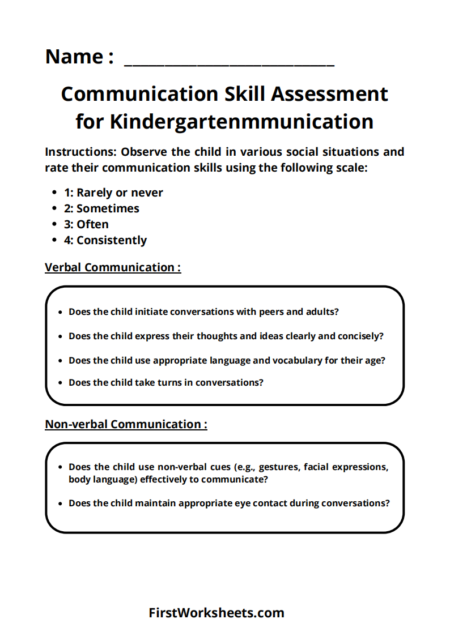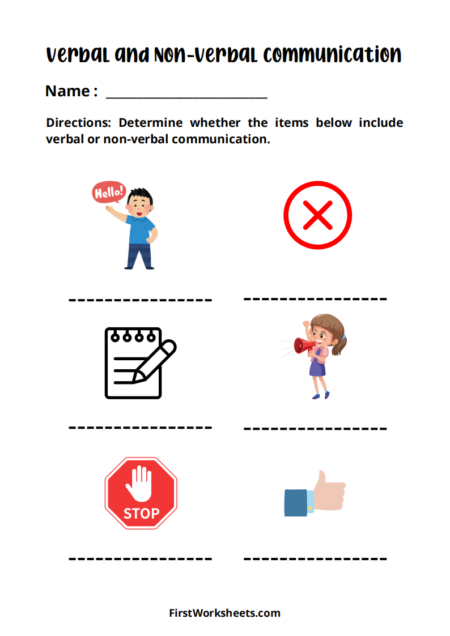This worksheet focuses on non-verbal communication, which is communication that occurs through means other than spoken or written words. The purpose of the worksheet is to help learners identify and understand the different types of non-verbal communication.
Worksheet Content:
- Matching Exercise: The core of the worksheet is a matching exercise. It presents five types of non-verbal communication:
- Eye Contact: How we look at others (or avoid looking at them) can communicate a lot about our interest, attentiveness, and emotions.
- Facial Expressions: Our facial expressions, like smiles, frowns, and raised eyebrows, convey a wide range of emotions and attitudes.
- Body Language: This includes our posture, gestures, and body movements. It can reveal our feelings, intentions, and level of confidence.
- Proxemics: This refers to how we use space and distance in interactions. The distance we maintain from others can signal intimacy, formality, or discomfort.
- Haptics: This involves touch, such as handshakes, hugs, or pats on the back. Touch can convey feelings of comfort, support, or power dynamics.
- Definitions: The worksheet provides definitions for each type of non-verbal communication. Learners are tasked with matching the type of communication with its correct definition.
Purpose:
- Raising Awareness: The worksheet helps learners become more aware of the various ways in which they communicate non-verbally.
- Improving Understanding: By defining and categorizing different types of non-verbal communication, the worksheet enhances learners’ understanding of this important aspect of communication.
- Enhancing Communication Skills: Ultimately, a better understanding of non-verbal communication can lead to improved communication skills. Learners can become more adept at interpreting the non-verbal cues of others and using their own non-verbal behavior more effectively.
This worksheet is a valuable tool for anyone seeking to improve their communication skills by understanding the nuances of non-verbal communication.

Answer Key






